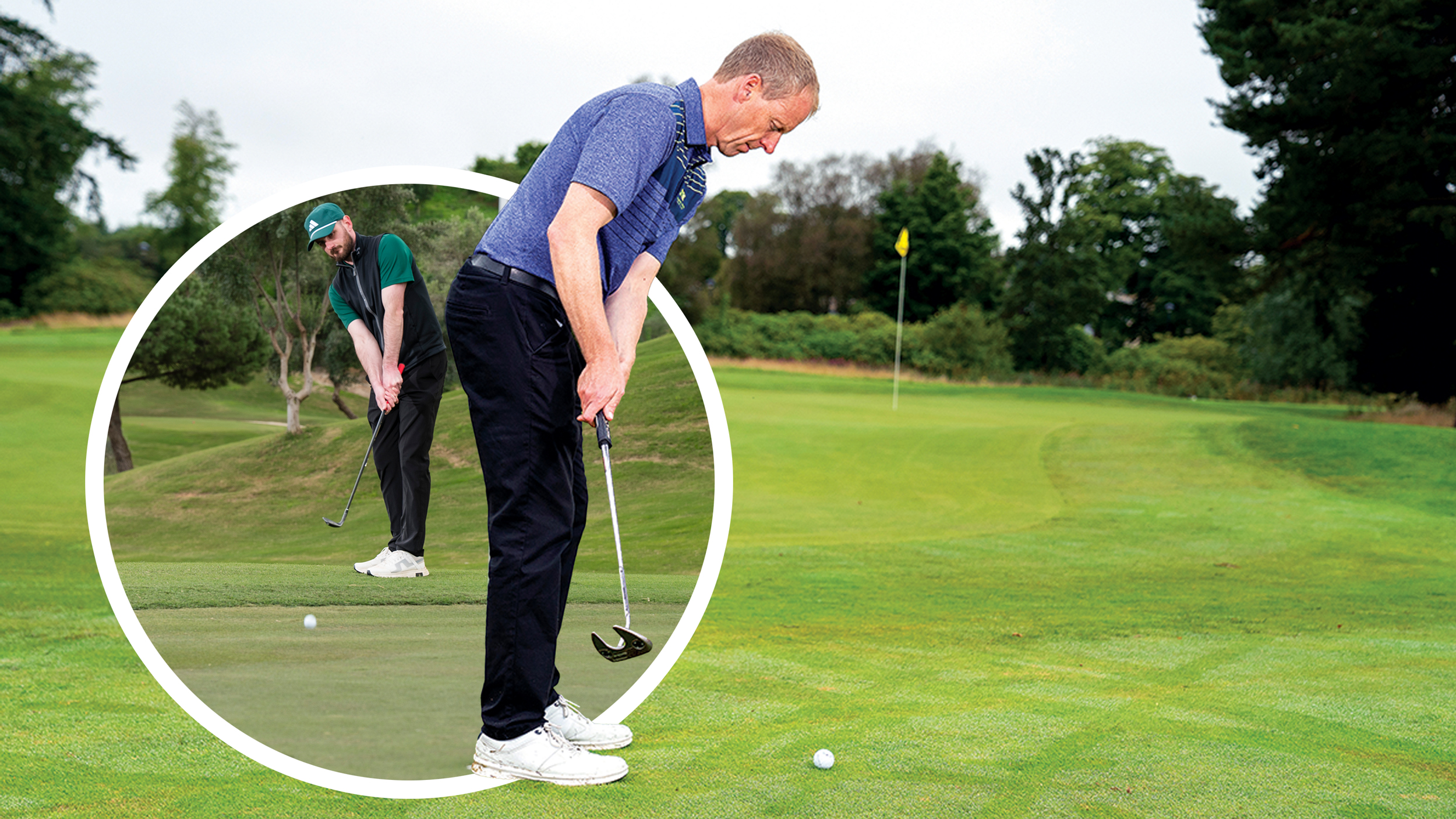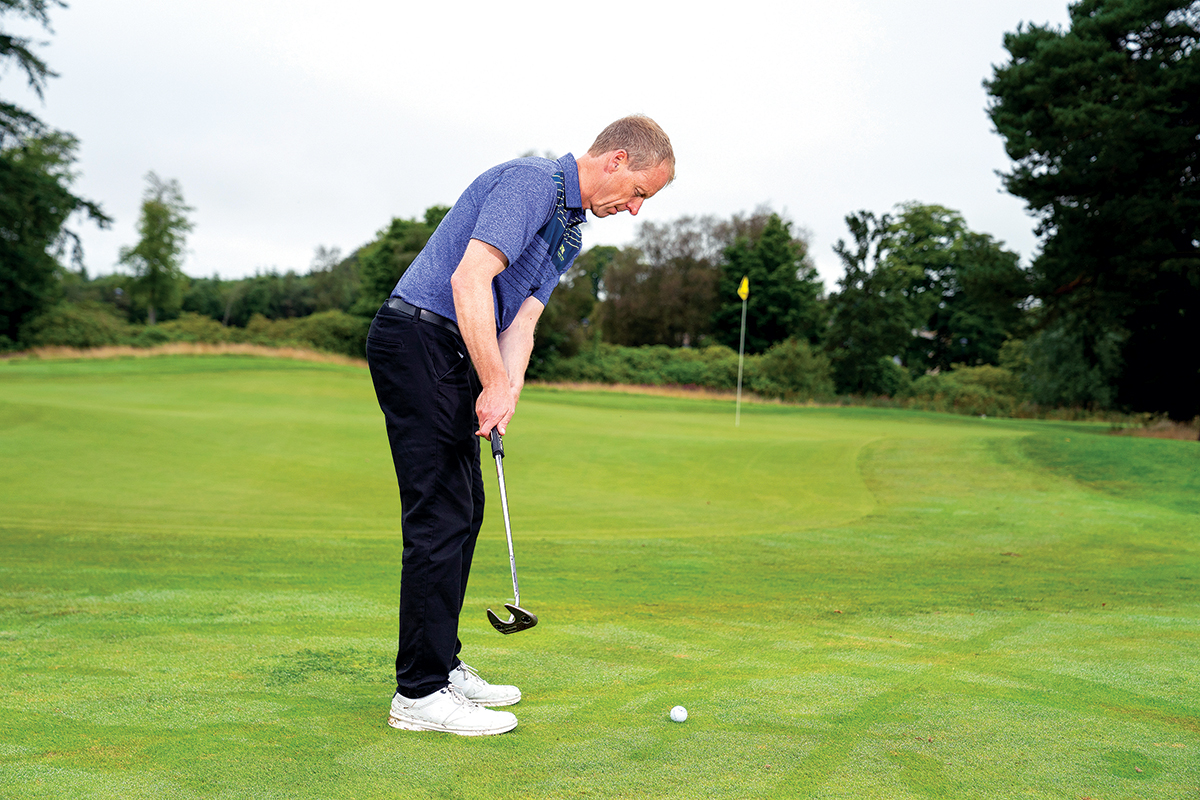When Should I Putt From The Fringe? This Data Will Challenge Your Short Game Mindset
Lots of golfers would benefit from putting when on the fringe or just off the green, but when should you opt for the putter over a wedge? Neil Marr explains...

Neil Marr

We've all been in a position where we are left with a tough choice on the golf course - putt from the fringe or take our chances with a wedge in hand.
With the images of some common amateur golfer mistakes around the green still burned into my brain, I often opt to stick with the relative safety of my putting stroke - mainly due to the fact that I still haven't mastered how to spin chip shots.
There are obvious pros and cons for both options, but the data suggests there is only one winner. According to Shot Scope, players are far more likely to get up and down from around the green when opting to use the putter (but more on that later).
With that in mind, we asked Golf Monthly Top 50 Coach Neil Marr to explain when you should (and shouldn't) putt from the fringe and to share some expert advice on how to get the best out of your flatstick when around the green...
When Should I Putt From The Fringe – What Does The Data Say?
As I mentioned earlier, the latest Shot Scope data overwhelmingly favours putting where possible around the greens. In fact, the average scratch golfer has a proximity of 5ft when opting for putter around the green and gets up and down 81% of the time.
This trend of increased short game success when choosing the flatstick continues for every handicap index range, but particular benefits are seen for high-handicap golfers.
A 25-handicapper gets up and down with putter 62% of the time on average, which despite being the lowest conversion percentage of any other handicap index (below 25) is still drastically better than when the same player goes with a pitching wedge (21%), gap wedge (22%), sand wedge (9%) or lob wedge (8%).
Subscribe to the Golf Monthly newsletter to stay up to date with all the latest tour news, equipment news, reviews, head-to-heads and buyer’s guides from our team of experienced experts.
So, with the data apparently favouring the flat stick, what does a PGA professional with more than 35 years experience in the game think?
When Should I Putt From The Fringe – What Does The Pro Say?

Neil turned professional in 1989, the same year he was Rookie of the Year on Scotland’s Tartan Tour. From 1991, he was Head Teaching Professional at Braid Hills, and in 2000 was appointed Head Teaching Professional at Meldrum House Country Hotel and Golf Course. Alongside his work as a teaching professional, for some 15 years Neil was the Scottish National Under-16 Boys’ coach, and later the Under-18 National Boys’ coach.
1. When To Putt From The Fringe
It’s a handy shot on firm links-type courses, but you must assess each situation carefully to gauge how good the fringe is and whether any wetness could make it tricky to judge, particularly when putting through quite a bit of fringe.
But it takes the club/turf interaction out of the equation, and most golfers strike putts better than chips.

Understanding when to putt from the fringe, and when not to, is a key skill that will help you to score better on the golf course
2. When Not To Putt From The Fringe
Putting may not be wise on undulating fringes or if there’s long grass behind the ball – a belly wedge or hybrid chip will be better choices here.
Many golfers who do putt from well off the green might be better off improving their understanding of how to chip or hit pitch shots, as flying it on to the green takes out the humps and hollows that make these putts hard to judge.
3. My Best Advice For Putting From The Fringe
If you like the idea of putting from more than a couple of feet off the green, you’ll need to practise these shots a little more to get used to the change in speed once the ball exits the fringe.
I would recommend adding this shot to your practice regime, and then taking a few more practice swings than usual out on the course to really get a feel for what is needed.
Are You A High-Handicap Golfer Who Wants To Shoot Lower Scores? Try These Four Bonus Tips...
In the video below, Golf Monthly deputy editor Joel Tadman uses decades of experience in the industry, along with the latest Shot Scope data, to share four ways that high-handicap golfers can shoot lower scores...
A post shared by Golf Monthly (@golfmonthly)
A photo posted by on

Baz joined Golf Monthly in January 2024, and now leads the instruction section across all platforms - including print and digital. Working closely with Golf Monthly's Top 50 Coaches, he aims to curate and share useful tips on every aspect of the game - helping amateurs of all abilities to play better golf. Baz also contributes weekly to the features section, sharing his thoughts on the game we love and the topics that matter most. A member at Sand Moor Golf Club in Leeds, he looks forward to getting out on the course at least once a week in the pursuit of a respectable handicap.
Baz is currently playing:
Driver: Benross Delta XT
3-Wood: Benross Delta XT
Hybrid: TaylorMade Stealth 4 Hybrid
Irons: Benross Delta XT 5-PW
Wedges: TaylorMade RAC 60, Callaway Jaws MD5 54
Putter: TaylorMade Spider Tour
- Neil MarrTop 50 Coach
You must confirm your public display name before commenting
Please logout and then login again, you will then be prompted to enter your display name.